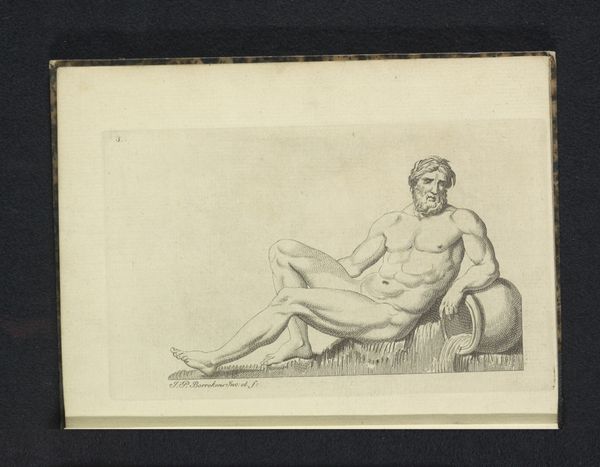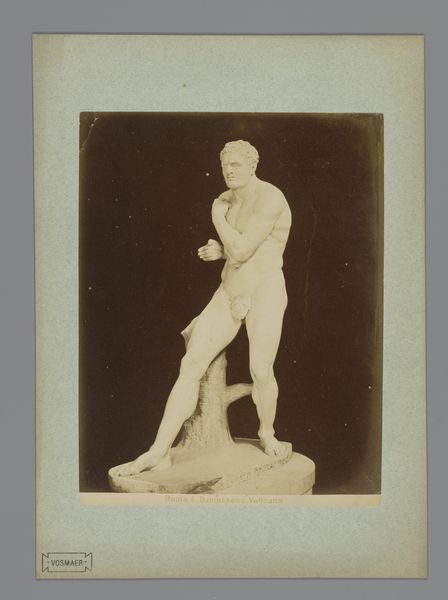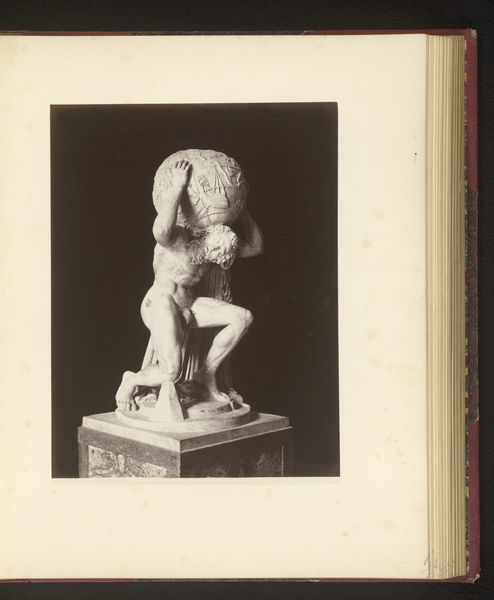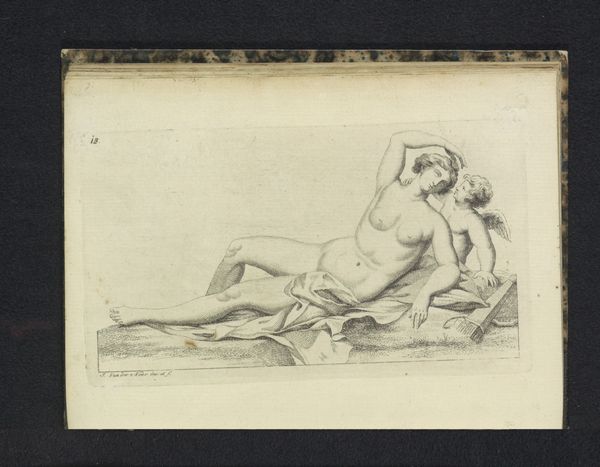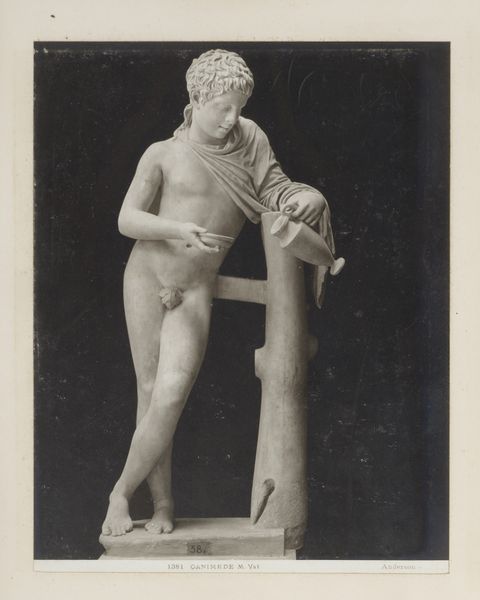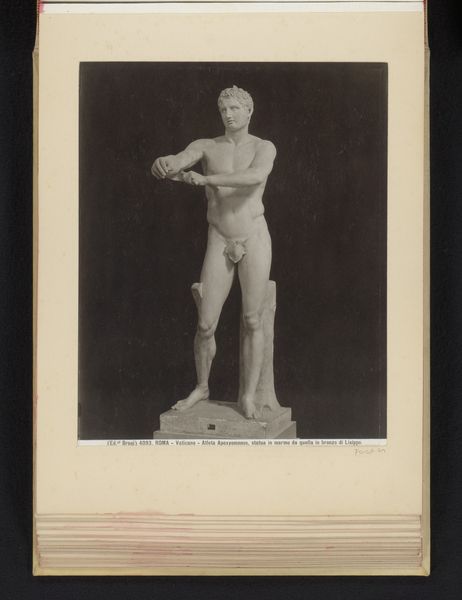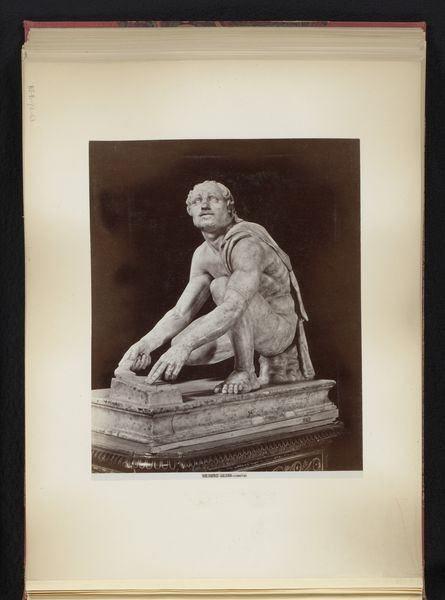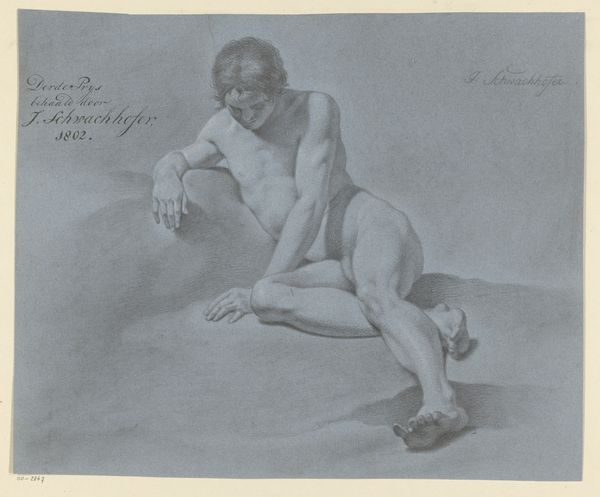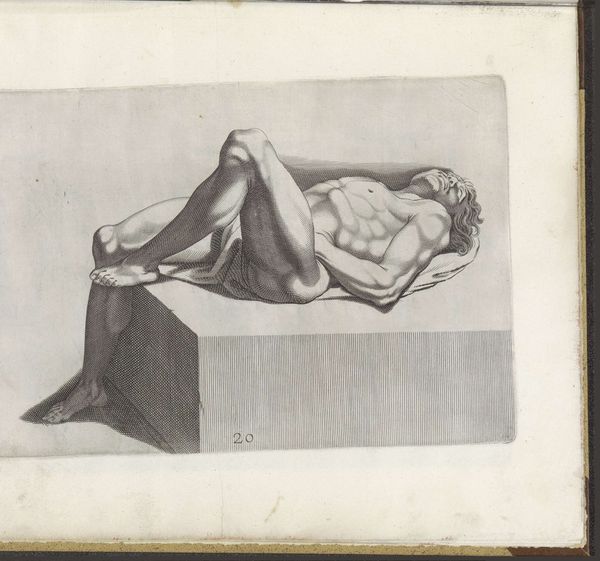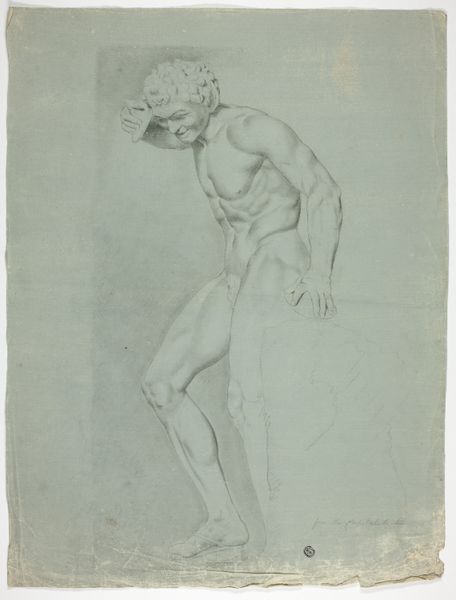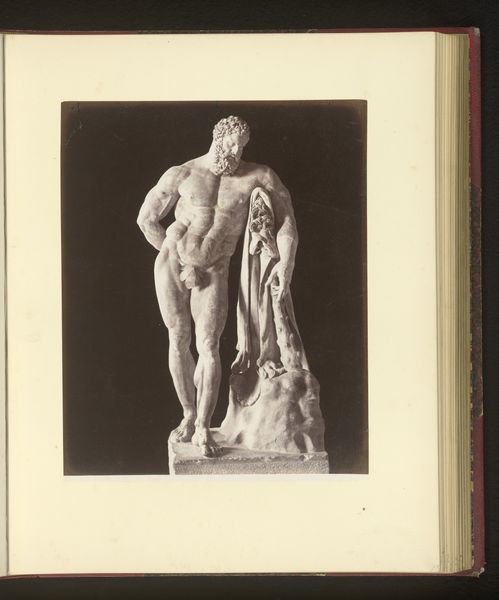
Sculptuur in de Capitolijnse Musea te Rome, voorstellende de Stervende Galliër before 1907
0:00
0:00
sculpture, marble
#
portrait
#
greek-and-roman-art
#
figuration
#
ancient-mediterranean
#
sculpture
#
marble
Dimensions: height 200 mm, width 250 mm
Copyright: Rijks Museum: Open Domain
Curator: Here we have an image of the Dying Gaul, a marble sculpture residing in the Capitoline Museums in Rome, predating 1907. The artist, though now unknown, has captured a truly poignant scene. Editor: It certainly is. Immediately, I’m struck by the sheer vulnerability. The figure, in its defeated pose, elicits an overwhelming sense of pathos. The choice to depict such raw emotion is fascinating. Curator: Indeed. Notice the careful attention to musculature and anatomy—how it informs the sculpture’s overall semiotic structure. The figure’s slumped posture creates diagonal lines that guide the viewer's eye. It's all about form. Editor: Agreed, the lines certainly do contribute to a classical aesthetic. However, to what extent does that aesthetic aestheticize the material conditions of warfare and, by extension, Roman power? Where did the marble originate? Who were the sculptors, and what was their process? The image raises serious questions. Curator: Your approach highlights how material conditions influence production. But the sculpture achieves artistic success through the use of negative space, particularly around the figure's torso. This provides definition. It suggests inherent and almost abstract beauty. Editor: While there’s visual interest, I consider the socio-political framework surrounding this artwork, recognizing the means used and for what ends it has become an essential way to contextualize and decode its meaning beyond aesthetic experience. I focus on marble as an emblem for wealth and imperialism. Curator: A valid perspective, certainly. I tend to be drawn to the artist's mastery of technique, the way he captures light and shadow, thus creating texture on marble, while simultaneously capturing emotional depth. Editor: I agree. Ultimately, regardless of our methodology, we must be aware of how production is embedded within history and politics as active participation to reveal both artwork and society. Thank you for the chance to discuss and elaborate on the value of process. Curator: And thank you for a thought-provoking counterpoint. Approaching it strictly as a work of art for the observer provides just as crucial a foundation to interpretation, however.
Comments
No comments
Be the first to comment and join the conversation on the ultimate creative platform.
